calsfoundation@cals.org
Drought of 1930–1931
Arkansas’s worst drought of the twentieth century took place in 1930–1931. Twenty-three states across the Mississippi and Ohio river valleys and into the mid-Atlantic region were caught in its grip. The severest drought centered upon eight Southern states, with Arkansas sixteen percent worse than the other states based on weather statistics. Agrarian blight became a precursor to corollary social, political, and disaster relief issues, which escalated and attracted national attention.
The devastating Flood of 1927, financial upheaval from the 1929 stock market crash, and killer tornadoes preceded the drought that struck Arkansas in the spring of 1930. Rainfall during June and July 1930 was the lowest on record—thirty-five percent below rainfall in 1929. July temperatures, typically in the nineties, reached 107 degrees. By August 2, Little Rock (Pulaski County) had seen seventy-one consecutive rainless days. August temperatures peaked at 113 degrees with successive 110-degree days.
Arkansas’s growing season averages 211 days, with a shorter span in the northwest but a longer span in the southern Delta. Annual rainfall, mostly in the spring and winter, is typically between forty-five and fifty inches, while the national average is thirty-four inches. In the 1930s, cotton was the leading crop grown commercially in all but five counties (Benton, Carroll, Madison, Newton, and Washington). The cotton yield in 1928 was six bales per twenty acres. The value of cotton produced in Arkansas in 1929 was $132,911,000, selling at an average of 16.79 cents a pound. The 1930 drought dropped cotton to 9.46 cents a pound. Farmers averaged two bales, not six, per twenty acres. By 1931, cotton was 5.66 cents a pound, costing more to plant than harvest returned.
T. Roy Reid, assistant director in charge of the state Agricultural Extension Service said, “Every county in Arkansas is affected and of the seventy-five counties only one, Benton, will have sufficient food for its farm population and livestock feed to tide it over the winter.” The chief of the U.S. Department of Agriculture Division of Agricultural Meteorology said in early August 1930, “I don’t like calling this a catastrophe, but I don’t like to think what may happen if the drought isn’t broken in the next two weeks.” It did not break. Without crops to sell or gardens to live off of, family food supplies dwindled quickly, with tenant farmers often hit hardest, depending on fishing, hunting, and the few surviving garden plants: greens, turnips, and onions.
Arkansas’s U.S. senators, Joseph T. Robinson and Thaddeus H. Caraway, outlined a relief program using both state and federal money. Robinson described the drought as having brought “almost complete crop failure.” Between thirty and fifty percent of Arkansas crops were lost. President Herbert Hoover’s sentiment regarding federal funds for drought relief was to reiterate President Grover Cleveland’s 1887 statement “that though the people support the Government, the Government should not support the people.” Hoover espoused self-help and volunteerism, adding that there had been “minimum actual suffering,” a statement undisputed by the Red Cross. Instead of federal food relief funding, Hoover called upon the Red Cross to meet the disaster relief need.
John Barton Payne, chairman of the national Red Cross, pledged $5 million to drought relief. One of the first available Red Cross relief programs was a four-pound box of seed for gardens and pastures even though adverse circumstances continued to exist. Turnips became an Arkansas late season crop that could do well even in an unfavorable environment. The University of Arkansas (UA) in Fayetteville (Washington County) and the Extension Service instituted a “self-sufficiency” farm campaign suggesting multiple ways to achieve food autonomy.
At an Arkansas drought meeting, the Drought Relief Committee, chaired by Harvey C. Couch, concluded that relief was probably not needed. At the same time, State Health Commissioner Charles Willis Garrison warned of increased deaths due to pellagra, a vitamin deficiency disease. Neither Governor Harvey Parnell, himself a plantation owner, nor the Arkansas General Assembly initiated legislative measures for statewide food relief. The governor supported the idea of local assistance as the first resource.
With harvest months coming, Delta plantation owners did not want free food given to their tenants, fearing it would disrupt their labor force and destabilize already reduced wages. One Red Cross chapter survey noted, “We do not believe we should give enough food to be comfortable for this would destroy the incentive of our negroes to work and might even ruin our labor force for years.” Outbreaks of pellagra (due to a lack of green vegetables) and typhoid fever (from a lack of clean drinking water) were blamed on the drought by November. A survey of local county committees administering relief reflected discrimination and intimidation directed at predominately African-American sharecroppers under white plantation owners. Ration recipients sometimes were required to perform service, such as cleaning streets, before receiving food or help. Those persons identified as “unworthy” received no aid.
Congressional drought bills waffled. Proposed loans for farmers required a mortgage on the forthcoming crop, but with the last year’s mortgage yet unpaid, most farmers did not qualify. The idea of dispensing food for livestock but not citizens was vehemently criticized by Arkansas’s congressional delegation. Congressional haggling concluded in a compromise the administration could support: $45 million for seed and feed and a later appropriation of $20 million for feeding people distributed by the Department of Agriculture. Secretary Arthur Hyde said planters and large farmers would get funds to pass in food aid to tenants and sharecroppers.
On Christmas Day of 1930, Arkansas Red Cross director Albert Evans visited thirty-seven sharecropper homes in St. Francis County, finding just six with rations. The Red Cross had expected plantation owners to see to the food and clothing needs of their tenants, but Evans learned this was not the case and changed his mind toward relief efforts, realizing food distribution must be instituted rather than delayed.
The Red Cross officially initiated its food program in January 1931, with thirty-five percent of the state already on relief. In three days, 165,518 signed up for assistance. Missing from food rations were meat, milk, sugar, and fresh vegetables.
A food “riot” was reported in England (Lonoke County) on January 3, 1931, when forty-seven tenant farmers went to the Red Cross office seeking ration forms used to obtain local food. The office had run out of the applications. Approximately 500 others joined the group in demanding food. Before the day’s end, local merchants handed over their supplies of food to the mob.
The Red Cross was optimistic enough in the early spring of 1931 that it pulled out by April 1. Their report on the drought in Arkansas listed 460,240 families fed and clothed, with still others fed through public school hot lunch programs, and over $3 million expended. No deaths were officially recorded as resulting from the drought.
Agricultural failure and famine in Arkansas due to the drought were eased though not erased by mid-1931. The struggle against weather and finance was not over as the Dust Bowl started and the Depression continued. Sharecroppers continued to toil under adverse social conditions but were on a path toward change. Nationally, Democrats handily won the White House, ushering in the New Deal. According to historian Ben Johnson, “drought-stricken Arkansas became a metaphor for anxieties spawned by the Depression.”
For additional information:
Lambert, Roger. “Hoover and the Red Cross in the Arkansas Drought of 1930.” Arkansas Historical Quarterly 29 (Spring 1970): 3–19.
Murray, Gail S. “Forty Years Ago: The Great Depression Comes to Arkansas.” Arkansas Historical Quarterly 29 (Winter 1970): 291–312.
Woodruff, Nan Elizabeth. As Rare as Rain: Federal Relief in the Great Southern Drought of 1930–31. Urbana: University of Illinois Press, 1985.
———. “The Failure of Relief during the Arkansas Drought of 1930–1931.” Arkansas Historical Quarterly 39 (Winter 1980): 301–313.
John Spurgeon
Bella Vista, Arkansas



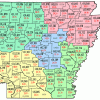
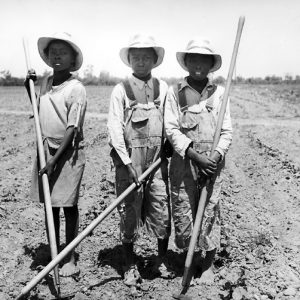
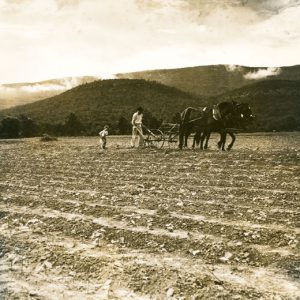
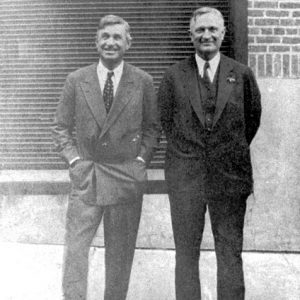
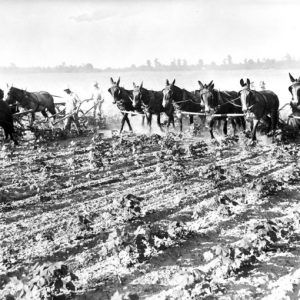







Comments
No comments on this entry yet.